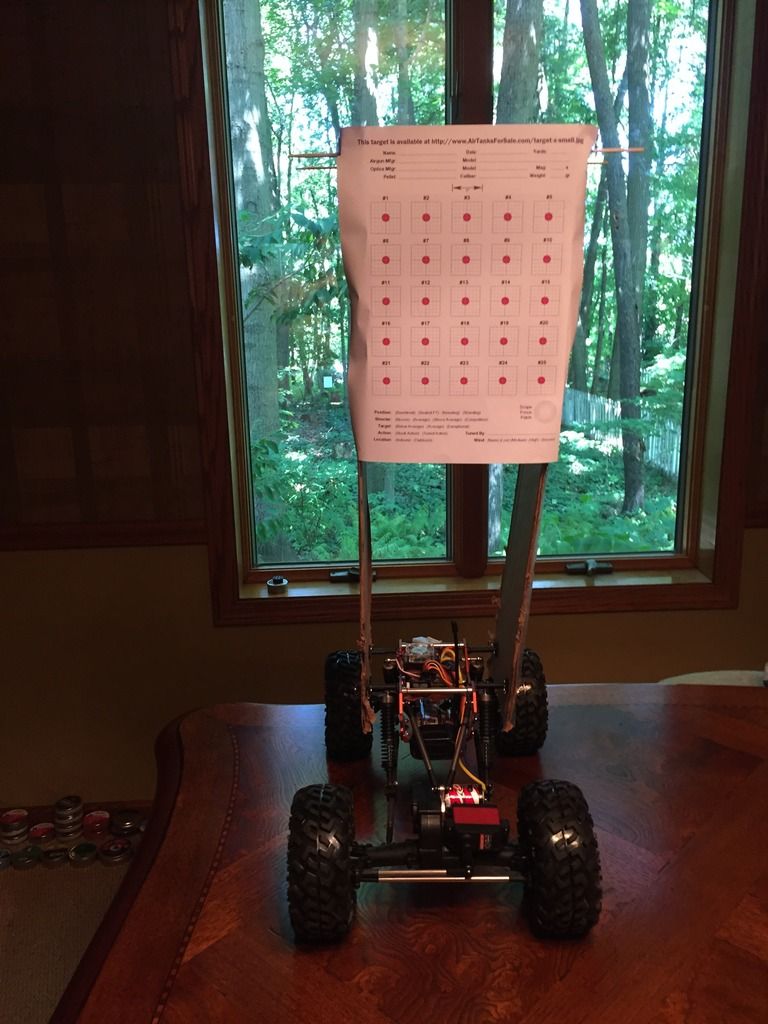Larspawn,
The green numbers are turret clicks (I have a 1/8 MOA click scope) from zero apex. I have about 73 clicks in one full turn of the turret. The green zero corresponds to my apex at 28 yards. If you look at red 42 yards, that is 10 clicks backwards. 50 clicks is at about red 66.5 yards. Green 60 (~71 yards) and green 70 (~76 yards) are continuing to turn the elevation turret and green 80 (~81 yards) is one full turn of the turret plus I'm guessing 7 more clicks past the green 0. I use these for yardage when I'm using Strelok or Chair Gun to calculate the shot. Up to 68 yards, I don't need those programs, but after that I use clicks and I'm marked to 120 clicks (~ 97 yards) which is about as far as I'd ever expect to shoot my .22 Airwolf in the field. 128 clicks is 100 yards.
I'm not sure what you are referring to as the second set of black numbers?
The green numbers are turret clicks (I have a 1/8 MOA click scope) from zero apex. I have about 73 clicks in one full turn of the turret. The green zero corresponds to my apex at 28 yards. If you look at red 42 yards, that is 10 clicks backwards. 50 clicks is at about red 66.5 yards. Green 60 (~71 yards) and green 70 (~76 yards) are continuing to turn the elevation turret and green 80 (~81 yards) is one full turn of the turret plus I'm guessing 7 more clicks past the green 0. I use these for yardage when I'm using Strelok or Chair Gun to calculate the shot. Up to 68 yards, I don't need those programs, but after that I use clicks and I'm marked to 120 clicks (~ 97 yards) which is about as far as I'd ever expect to shoot my .22 Airwolf in the field. 128 clicks is 100 yards.
I'm not sure what you are referring to as the second set of black numbers?
Upvote 0
